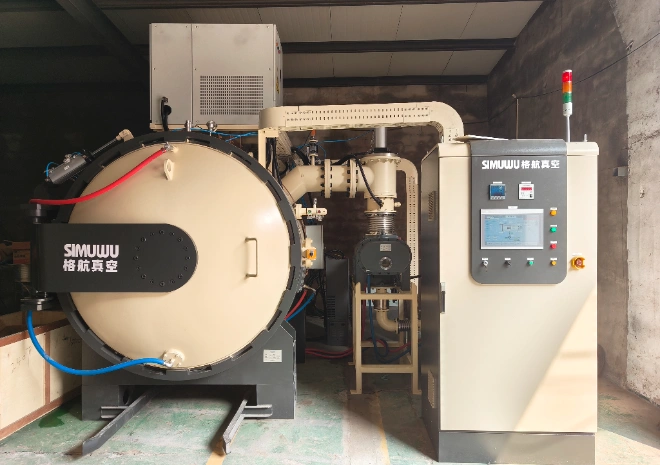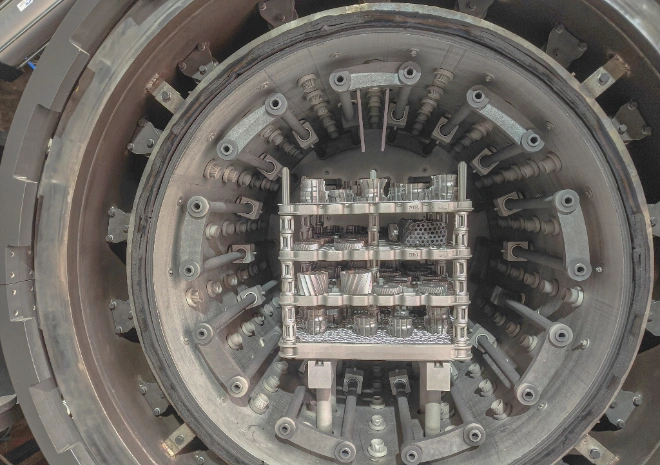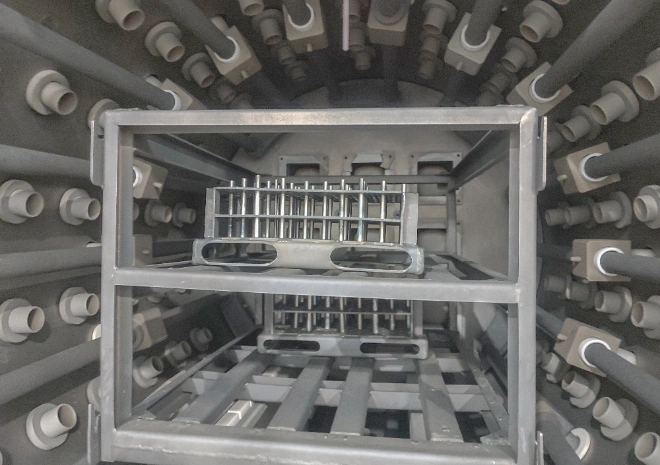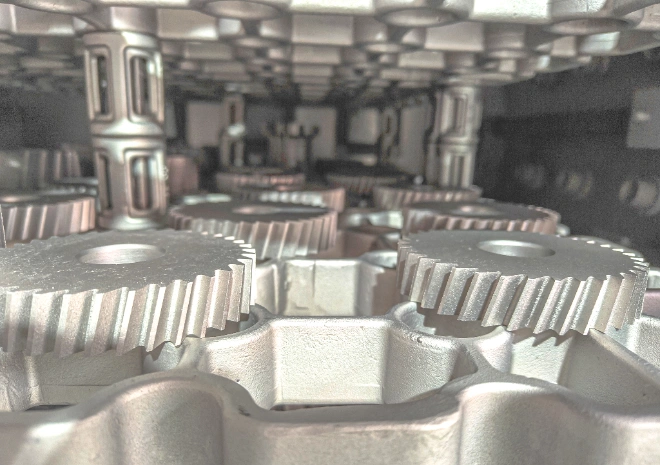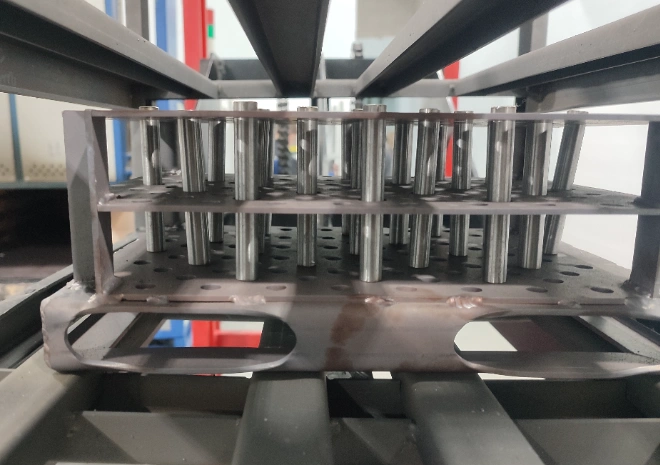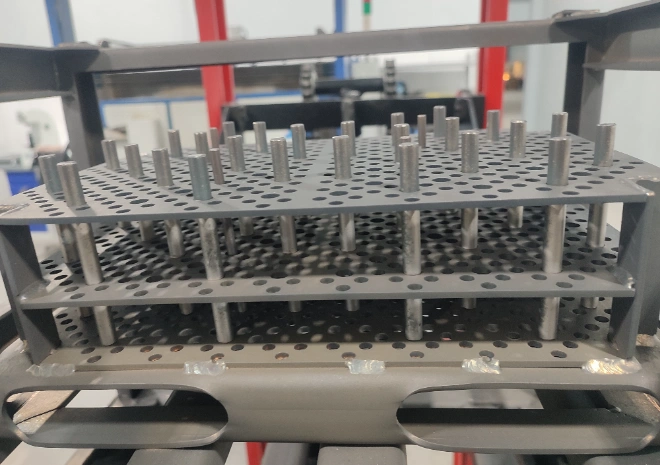Introduction:
Vacuum gas quenching furnace is a piece of equipment used for heat treatment of metal materials, widely applied in fields such as aerospace, automobile manufacturing, and mold manufacturing. Vacuum gas quenching technology combines vacuum technology with rapid gas cooling technology. Its working principle involves heating metal materials in a vacuum environment and then rapidly cooling them by injecting inert gases (usually nitrogen or argon). The vacuum environment can effectively prevent oxidation on the material surface, while rapid cooling helps form a uniform microstructure, thereby improving the material’s strength, hardness, wear resistance, corrosion resistance, and other properties.
Main Advantage
1.Prevention of oxidation and decarburization:
Heating and quenching in a high-vacuum environment effectively isolate external air, avoiding oxidation and decarburization of workpieces during heating and cooling processes. This ensures the surface finish and intrinsic performance of the workpieces are maintained.
2.Precise temperature control:
The advanced temperature control system can limit temperature fluctuations within ±5℃, ensuring uniform temperature distribution across the workpiece during heating and heat preservation stages, thus guaranteeing consistent heat treatment quality.
3.Rapid cooling speed:
Through the combination of high-pressure inert gas and high-speed fans, the workpiece can be rapidly cooled in a short time. The efficient cooling performance helps reduce internal thermal stress and uneven microstructure transformation of the workpiece, improving its mechanical properties and stability.
4.Minimal workpiece deformation:
Precise temperature control and uniform cooling methods keep the deformation of the workpiece within a small range during quenching. This helps maintain the shape accuracy and dimensional stability of the workpiece, meeting the requirements of high-precision processing and assembly.
5.Energy efficiency and environmental friendliness:
Compared with traditional heat treatment equipment, the vacuum gas quenching furnace operates in a vacuum environment, reducing energy waste and minimizing environmental pollution.
Related Configuration
1.Heating Chamber
●Heating Chamber : Circular/Square
●Heating Element : Graphite / Molybdneum
The heating chamber consists of a stainless steel frame, heat insulation layer, heating elements, insulation parts, and a furnace bed. According to customer requirements, heating elements are made of different materials for various scenarios, with a maximum operating temperature of up to 1300℃ and excellent furnace temperature uniformity.
2.Vacuum system
Well-known domestic and foreign vacuum pump brands, such as EVP, Leybold, etc., are matched according to customer needs.
3.Control system
The operation control of this equipment is performed by the Siemens S7-1200 programmable logic controller. Interlock protection control is adopted for the equipment’s vacuum pump, valves, heating power supply, cooling fan, and other components. The system can judge and alarm abnormalities occurring during equipment operation, enabling fully automatic control. The network system supports remote network control and data transmission functions. All low-voltage components use international brands such as Siemens, Schneider, and Phoenix, which are highly reliable in terms of quality, performance, and craftsmanship, reducing the failure rate of the control system.
The network system supports remote network control and data transmission functions.
Remote fault diagnosis, remote process debugging, etc.
Supports software upgrade and update.
4.Other Systems
Our temperature measurement system adopts a 9-point temperature monitoring method to accurately track the product temperature in real-time, ensuring that the furnace temperature uniformity is maintained within the range of ±3℃ to ±5℃.
The pneumatic system can be automatically controlled via a touch screen, enabling pneumatic control of the entire gas circuit.The gas charging system can be set up once without the need for re-adjustment; its on-off operation is realized through solenoid valves, making it simple, convenient, and easy to regulate.
A water cooling system is also equipped, mainly used to control the temperature of the furnace body, vacuum pump, and heating electrodes, ensuring the normal operation of the vacuum furnace.
Technical Parameter
| Model |
Effective Working Zone (W*H*L) |
MAX Temperature |
Cooling Gas
Pressure |
Ultimate Pressure |
Temperature
Uniformity |
Loading
Capacity |
| RVGQ-446 |
400*400*600mm |
1300℃ |
6/10/15Bar |
4*10⁻¹Pa /6.7*10⁻³Pa |
±5℃ |
200Kg |
| RVGQ-557 |
500*500*700mm |
1300℃ |
6/10/15Bar |
4*10⁻¹Pa /6.7*10⁻³Pa |
±5℃ |
300Kg |
| RVGQ-669 |
600*600*900mm |
1300℃ |
6/10/15Bar |
4*10⁻¹Pa /6.7*10⁻³Pa |
±5℃ |
500Kg |
| RVGQ-7710 |
700*700*1000mm |
1300℃ |
6/10/15Bar |
4*10⁻¹Pa /6.7*10⁻³Pa |
±5℃ |
700Kg |
| RVGQ-8810 |
800*800*1000mm |
1300℃ |
6/10/15Bar |
4*10⁻¹Pa /6.7*10⁻³Pa |
±5℃ |
1000Kg |
| RVGQ-8812 |
800*800*1200mm |
1300℃ |
6/10/15Bar |
4*10⁻¹Pa /6.7*10⁻³Pa |
±5℃ |
1000Kg |
| RVGQ-9915 |
900*900*1500mm |
1300℃ |
6/10/15Bar |
4*10⁻¹Pa /6.7*10⁻³Pa |
±5℃ |
1200Kg |
| RVGQ-101015 |
1000*1000*1500mm |
1300℃ |
6/10/15Bar |
4*10⁻¹Pa /6.7*10⁻³Pa |
±5℃ |
2000Kg |
| Remark:The working zone of equipment could be customized base on customer’s production. |
After-Sales and Acceptance Services
After the completion of production, the manufacturing plant will conduct factory acceptance test, including:
1.Ultimate vacuum test
2.Pressure rise rate test
3.Inspection of the completeness of all equipment systems
After the equipment is delivered to the user’s site, site acceptance test will be carried out, including:
1.Overall installation
2.Overall debugging
3.User training
4.Document handover
Warranty
The warranty period is one year from the date of final acceptance. It covers non-human-damaged components (excluding consumables/wear parts), as well as manual maintenance services and transportation costs incurred during the warranty period.
